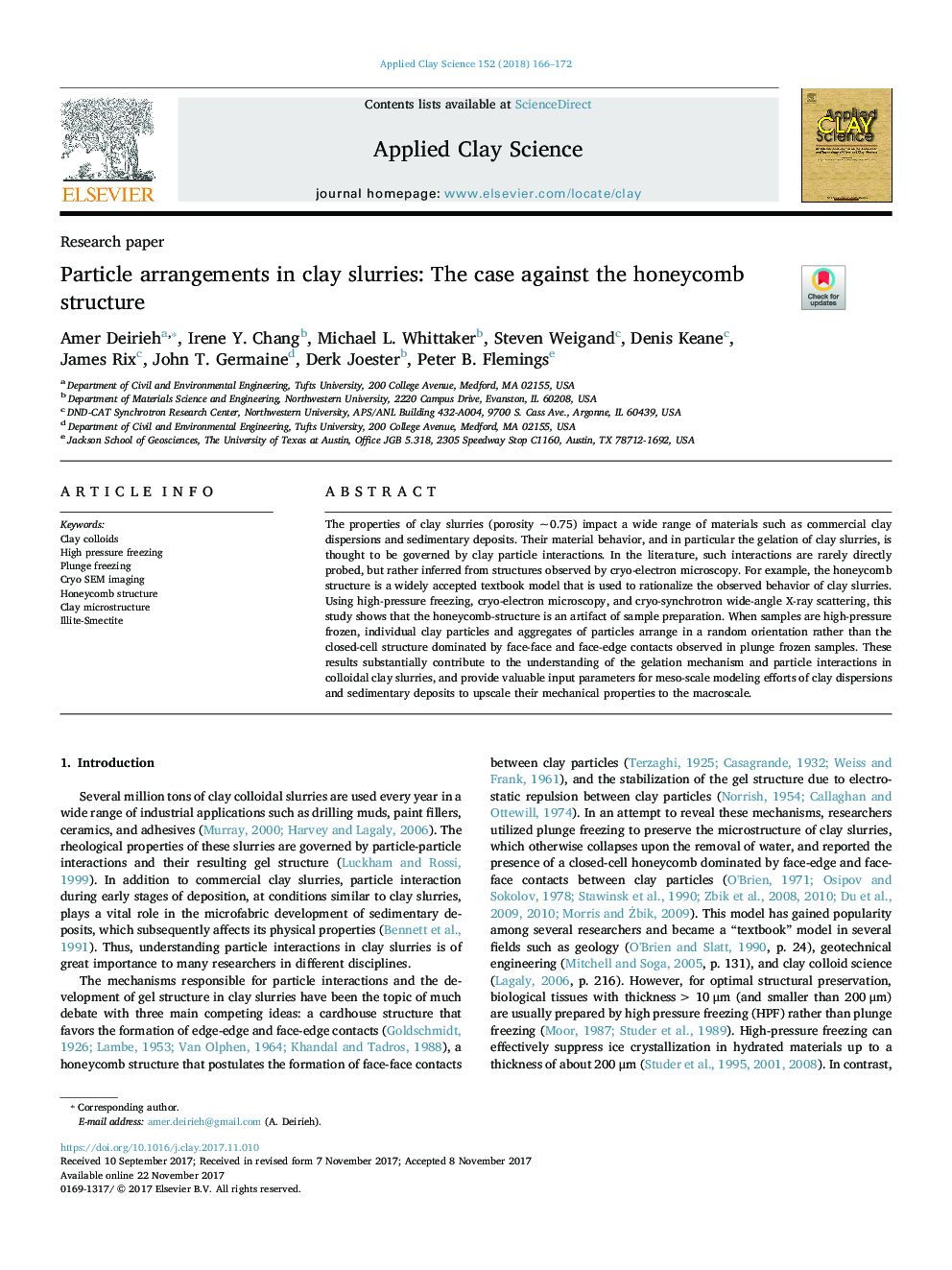| Article ID | Journal | Published Year | Pages | File Type |
|---|---|---|---|---|
| 8046315 | Applied Clay Science | 2018 | 7 Pages |
Abstract
The properties of clay slurries (porosity ~Â 0.75) impact a wide range of materials such as commercial clay dispersions and sedimentary deposits. Their material behavior, and in particular the gelation of clay slurries, is thought to be governed by clay particle interactions. In the literature, such interactions are rarely directly probed, but rather inferred from structures observed by cryo-electron microscopy. For example, the honeycomb structure is a widely accepted textbook model that is used to rationalize the observed behavior of clay slurries. Using high-pressure freezing, cryo-electron microscopy, and cryo-synchrotron wide-angle X-ray scattering, this study shows that the honeycomb-structure is an artifact of sample preparation. When samples are high-pressure frozen, individual clay particles and aggregates of particles arrange in a random orientation rather than the closed-cell structure dominated by face-face and face-edge contacts observed in plunge frozen samples. These results substantially contribute to the understanding of the gelation mechanism and particle interactions in colloidal clay slurries, and provide valuable input parameters for meso-scale modeling efforts of clay dispersions and sedimentary deposits to upscale their mechanical properties to the macroscale.
Related Topics
Physical Sciences and Engineering
Earth and Planetary Sciences
Geochemistry and Petrology
Authors
Amer Deirieh, Irene Y. Chang, Michael L. Whittaker, Steven Weigand, Denis Keane, James Rix, John T. Germaine, Derk Joester, Peter B. Flemings,
